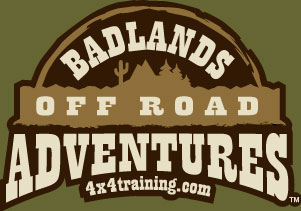Former Boy Scouts remember having to learn five types of knots. The square knot and double half hitch are very useful. Brush up on those if you need to. For off-road purposes, it’s helpful to learn several others as well. I’ve been fascinated with tying knots since I was introduced to the Ashley Book of Knots as a kid. (Link to The Ashley Book of Knots). Over the years I’ve mastered a number of different types of knots, but this column will concentrate on a few that are most suited to off-road activity. Along with the square knot and double half hitch, it’s good to know the Trucker’s knot and the rolling hitch (sometimes called the taut line hitch). I won’t describe how to make these, because you can see for yourself on the Animated Knots by Grog Web site. Check out all the amazing videos by clicking on a knot. The Trucker’s knot is useful any time you need to cinch up the rope. A good example is when you’re securing supplies to the roof of your vehicle. You want to get that rope as taut as possible; the Trucker’s knot allows you to do that. As long as you have two points to tie down your materials, this knot works really well. A rolling hitch knot comes in handy when you’re staking down a tent. The rope in essence becomes a guy line. After securing on both ends (the stake and the tent grommet), you tie a knot in the middle of the rope. To take up the slack, simply move the knot downward. For you Scouters, who learned the taut line as a boy, the rolling hitch is only slightly different but significantly more secure. How much and what type of rope to buyYou don’t need much rope for most applications. My pieces tend to be 6’ or 8’ long. You can do a lot with those lengths. Several standard 25’ packages will be enough. Your needs won’t change much from one trip to the next, so once you’ve cut a few segments, you’ll find yourself using them repeatedly. I usually carry 6 to 8 8ft ropes in a zip lock bag.I tend to buy white nylon rope. It’s thin (usually 1/8” or 5/16”) and slippery, but is very strong so it holds up well. A lot of people like parachute cord. Stay away from clothesline. It’s made mostly of natural fiber, and just doesn’t hold up well over time. It also isn’t as strong as nylon. The most important factor, of course, is strength. Make sure you buy the proper rope for your need. If you’re just tying stuff to your roof or doing things around camp, a thin line is sufficient. Buy thicker rope for rescues and other tasks that involve a lot of stress. Climbing rope works well for that. Respect your ropeMake sure your load is secure, that it’s tied down. Tug on it from every direction. If there’s too much play in the load, tighten your ropes. Anything on the roof of your vehicle will undergo tremendous forces both on-road and off-road. This is a good area to use extra rope.The Grog site mentioned above has some additional safety information on its home page. I’ll recap the major points here. Always wear gloves when working with rope. Thin rope, especially nylon, cuts into skin easily, and rope burns are possible under the right conditions. A knot weakens the rope by upwards of 50%. This is why you never tie a knot into ropes and straps used for recovery or any other use that puts the rope under severe stress. Inspect your rope before each use. Replace any that is cut, worn, or damaged from heat or chemicals. Rope is really inexpensive. The few bucks you spend before your trip can save a lot of grief later on. Rope is one of those multi-purpose items that you don’t fully appreciate until you need it. Learning – or brushing up on – some basic knots can help you take full advantage of this very useful component of off-road adventures. |
|
|
Related Articles from Badlands Off-road Adventures |
||
Did you miss the previous article? If so, read it here |
||
New BLM Rules June 25, 2010
Want to read the actual details from the BLM? Follow this link and also learn the definition of Public Nudity. http://www.blm.gov/ca/st/en/fo/cdd/cdd_supplementary.html |
|
|
Wine Safari July 24
Register now. http://4x4training.com/calendar/calendar.php#wine. |
||
Sand Clinic July 31, 2010
More details... Register for the Sand Clinic using this link. http://4x4training.com/calendar/calendar.php#Sand |
||
Rubicon Trail Adventure August 16- 19, 2010
The Rubicon Trails is the stuff of legends. It is considered the Grand Daddy of trails. If your vehicle has a weakness, it will find it. Any serious four-wheeler needs to "Do the 'Con" at least once. There is no guarantee of avoiding vehicle damage. Even the most skilled driver can succumb to the fatigue of 12 unrelenting miles of rocks. Just bring a good attitude and the best prepared vehicle you can. This could be a once in a lifetime trip but a lifelong of bragging rights. More Details You need to register now so you have time to prepare. Register directly at http://4x4training.com/calendar/calendar.php#Rubicon |
||
Winching & Recovery DVD
Don't forget to order a Winching DVD - only $19.95 plus shipping and handling. Read the press release Order the Winching DVD! PS - our web master is not too bright, so he used the same format to order DVD's as to register for a class. Just fill in the parts that make sense. |
||

Check out the 4 minute video on the Badlands Off-Road Home page And look at the new slide show on the home page. (Another example of our bright web master's work! For best viewing us I.E. His code is not too swift on Firefox.) 
|
||
|
|
| Back | | Phone 310-374-8047 |